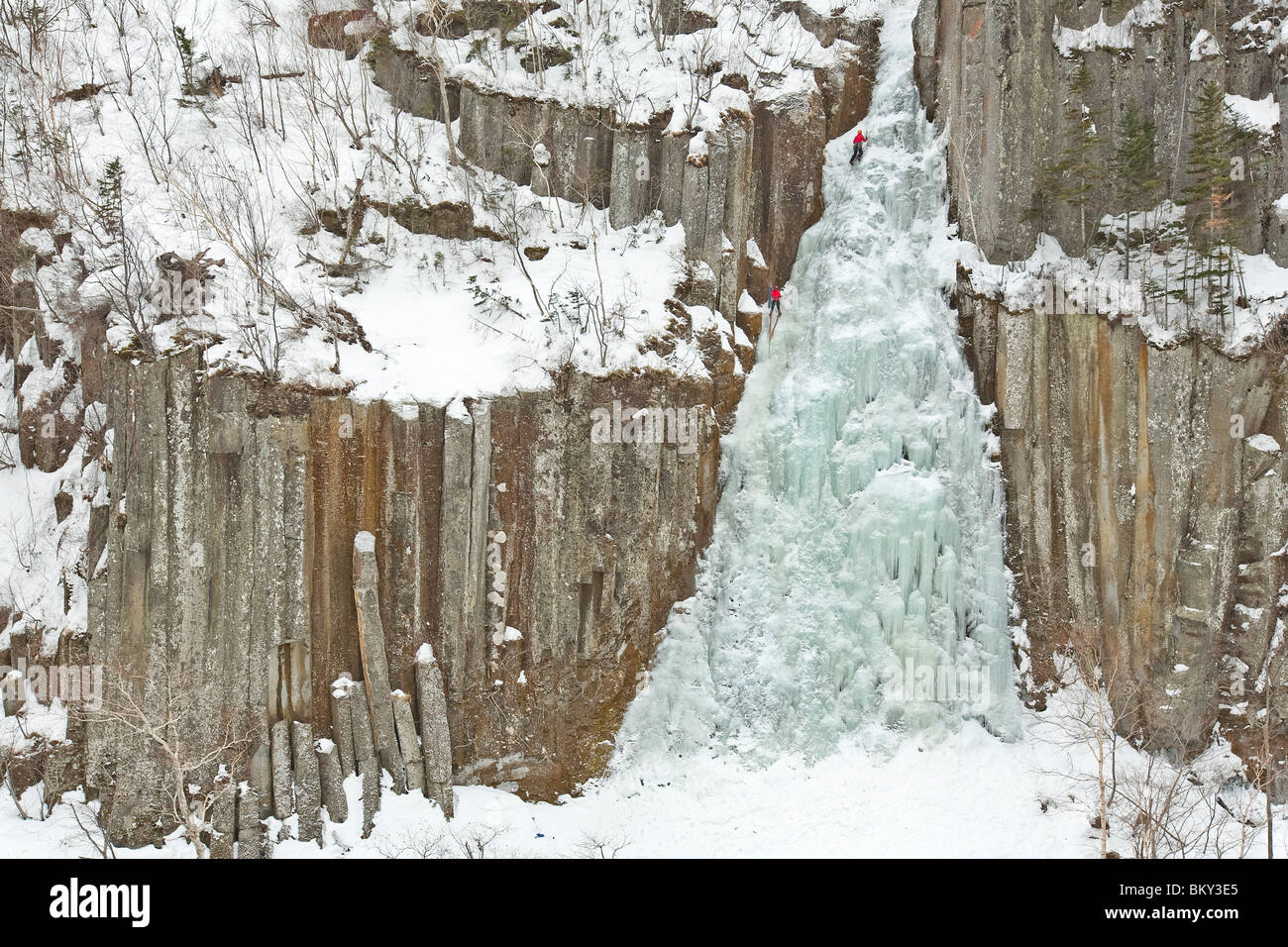

If you go through phases 1 and 2, your physical limits will progress much farther than if you skip straight to the muscular endurance workouts. This is what many of the current fitness fad workouts consist of because this training feels hard and fun, and the gains are fast and noticeable-until you reach the limit of your physical potential, which, by no coincidence, is either what you show up with or what you built in phases 1 and 2. Or to put it another way, this is training your muscles to “wire together to fire together.”
#CLIMBING FROZEN WATERFALL BREAKS HOW TO#
The basic principle behind max strength sessions is to teach your nervous system how to fire more muscle fibers together, in concert, to produce more power. These workouts are fun, quick to do, and you see clear gains from week to week. To put it another way, there is no such thing as overtraining, only underrecovering. Failing to recognize this fact results in injuries. The highest-level professionals do this, and you should too. Every athlete needs to return to fundamental conditioning work at least once a year. I like to say that climbing injuries aren’t caused by overuse, they’re caused primarily by ignorance (and secondarily by hubris). Gains come fast and furious in the next two stages, but if you skip step one you stand a good chance of getting injured and derailing the whole process. It can be difficult to stay motivated for the necessary four to eight weeks of this training because the gains are not obvious. The workouts are fairly long, containing a lot of sets and reps. This is a crucial stage and one of the hardest. The reality is that there are three key phases to strength development. It is a common approach-and a backwards one. I would do as many as I could in a day, then I’d repeat that again in a few days once the soreness had started to wear off. I originally thought that ice climbing training simply consisted of doing loads of pull-ups. Too many people-including a younger me-start with muscular endurance. Because of our physiologies, we’re locked into this longer-is-better method: It takes a long time to go through enough of these stress, rest, repeat cycles to make gains.ĭeveloping both core and upper-body strength isn’t that difficult, but it requires tackling the process in the correct order. Training itself is described by a simple recipe: Apply a training stress followed by rest, then repeat, applying a slightly higher training stress, and do this over and over and over again.

The reasons behind these time frames lie in our human physiology and how we adapt to exercise and training stress. I often ask people to adopt a 16-week time frame, and if they can do it, 24 weeks is even better. So if we establish that eight weeks is a good minimum block for producing meaningful results, then let me tell you that the more time you can dedicate to progressing, the more significant and bigger the gains you will see. A two- or four-week plan is good if that is what you can wrap your head around, but most people won’t see much progress in that time frame.

I recommend that people train for at least eight weeks. This is how the world’s best become the world’s best. If you wish to be the very best you can be, the timeline will be many years, probably more than a decade, of purposeful, smart training. The answer to this depends on how high you set your expectations. Ice Climbing Training-How Long Does It Take to Get Strong? If that is you, I recommend adding two to three aerobic workouts per week to increase your overall health and help you shed the weight. The notable exception will be for people who would like to lose weight in order to optimize their climbing. There just isn’t much aerobic demand in this sport. For this reason, ice and mixed climbing training is largely done in the weight room and climbing gym. But underlying it all is a certain basic level of strength. It all sounds complicated, and movement-wise there are many ways in which we can use our bodies to ascend steep ice and mixed terrain. WHAT IS THE BEST WAY TO TRAIN FOR ICE CLIMBING?


 0 kommentar(er)
0 kommentar(er)
